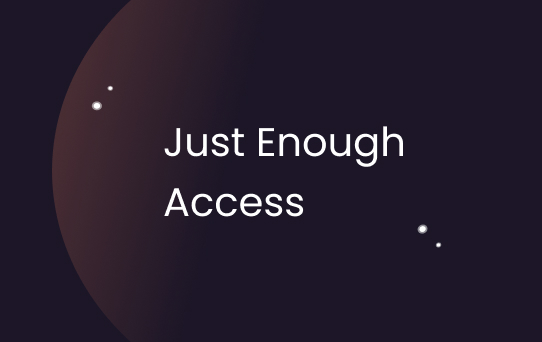Just Enough Access
Just Enough Access (JEA) is a principle in identity and access management that limits the rights of a user to the bare minimum they require to perform their job. Stemming from the cybersecurity concept of "least privilege access," it dramatically reduces the risk associated with users possessing excessive permissions or access rights. By ensuring that each user has only the necessary tools or permissions, businesses can prevent potential security breaches, while also mitigating the potential severity and impact of those that do occur.
Why Just Enough Access Exists?
JEA serves as a security management tool, hence it exists to mitigate risks associated with unnecessary and excessive user privileges. Cybersecurity threats have increased significantly over the years, with insider threats becoming equally dangerous as external ones. Inadvertently or deliberately, insiders with extensive permissions could potentially cause harm to a system. To minimize these vulnerabilities, the JEA principle comes into play—to limit each user’s access to "just enough" to execute their tasks and nothing more.
Who Needs Just Enough Access?
Every organization, big or small, that values the security and integrity of its digital assets and infrastructure needs Just Enough Access. This principle is highly beneficial to IT administrators, cloud managers, DevOps teams, and even non-technical departments within an organization. Essentially, JEA is applicable to any sector where systems and data require protection from internal and external threats. This approach is also quite useful in preventing privileged access abuse, which is a common vector for cyberattacks.
How Just Enough Access is Used?
Implementing JEA typically involves a thorough audit of current user permissions to determine necessary access levels. Then, policies can be created and enforced to ensure employees have the precise level of access they require. Tools like Identity Access Management (IAM) and other permission management software can aid in enforcing these accountability measures, especially in large organizations. Continuous monitoring is also a component of JEA implementation to cater to changes in roles and responsibilities over time.
Just Enough Access in Cloud Infrastructure
In the context of cloud infrastructure and SaaS, Just Enough Access plays a pivotal role in maintaining security. The rapidly growing adoption of cloud computing has brought about new security concerns, as the cloud's vast and remote nature can easily lead to over-privileged access. To counter this, many cloud service providers incorporate JEA principles within their service design, offering temporary access or just-in-time permissions to users. Application of these principles contributes to a robust cybersecurity posture and is considered a best practice in the modern digital landscape."








